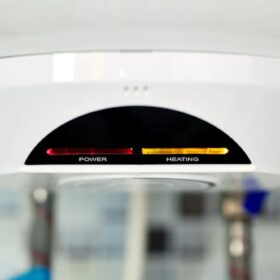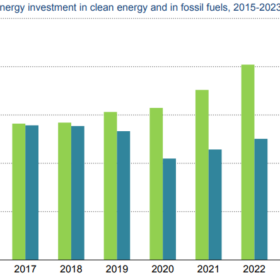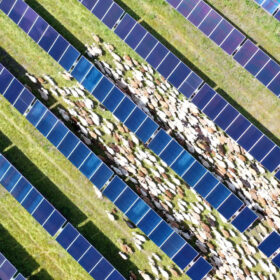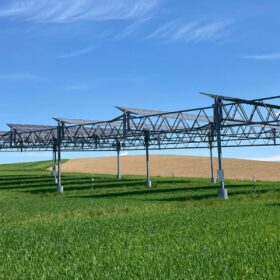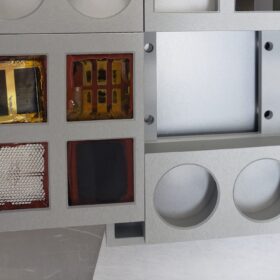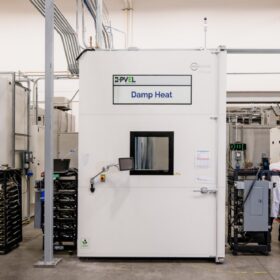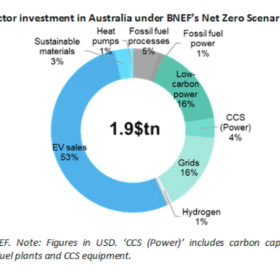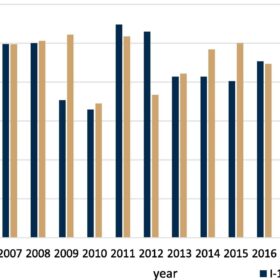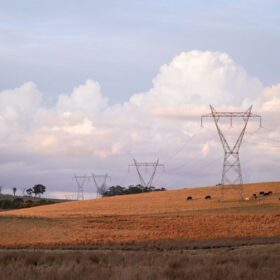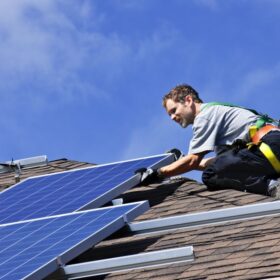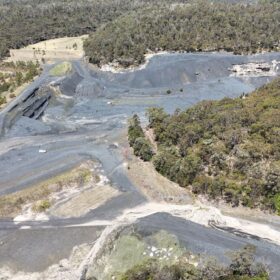Using electric water heaters to store renewable energy could do the work of 2 million home batteries
Australia’s energy transition is well under way. Some 3 million households have rooftop solar and sales of medium-sized electric cars are surging. But as we work towards fully electric households powered by renewable energy, have we overlooked a key enabling technology, the humble electric water heater?
Global investment in clean energy nearly doubles that of fossil fuels
For every dollar invested in fossil fuels, 1.7 dollars are invested in clean technologies. Five years ago, it was a one-to-one ratio, said the International Energy Agency.
Sheep grazing team to reduce solar mowing costs by more than 44%
About 70 Katahdin breed sheep were dropped off at the Oberlin College campus in Ohio last week. They will graze through mid-June, stomping grass and weeding the solar field in a move aimed at reducing operations and maintenance costs.
Agrivoltaics can mitigate effects of drought
A new study by the University of Hohenheim shows that shading from PV systems can improve agricultural yields, especially in dry periods, but additional research is needed.
Weekend read: the cells of the future
The annual SiliconPV Conference came to TU Delft in the Netherlands in April, and offered an important health check for the science and technology behind solar energy. pv magazine was on site to hear the latest from researchers reaching for higher efficiency through tandem cells and other innovations; looking to understand and mitigate cell degradation mechanisms; and working to cut down solar technology’s consumption of rare and expensive materials.
NASA makes unusual discovery while testing perovskite solar cells in space
US space agency NASA has discovered that perovskite solar cells tested in space exhibit less degradation than reference devices tested on Earth. The agency acknowledged that it is uncertain about the specific factors in the space environment that contributed to the superior performance of the perovskite absorber film.
PV Module Reliability Scorecard released by PVEL
2023 Scorecard names 250 types of solar modules from 35 manufacturers as Top Performers.
To be a hydrogen superpower, Australia requires 812 GW of renewables by 2050, BNEF says
To reach net zero by 2050, Australia will need 300 GW of wind and solar, and $413 billion (USD 2.72 billion) of investment, according to BloombergNEF. To reach hydrogen superpower status, that figure balloons to 812 GW of renewables and $739 billion of investment.
Researchers assess degradation in PV systems older than 15 years
Scientists have used the US National Renewable Energy Laboratory’s (NREL) HOMER software to calculate the degradation of solar panels deployed in two rooftop PV systems operating in Germany since 2003. Their calculations focused on the energy productivity of the systems.
New model to assess levelised cost of hydrogen in PV-powered electrolysis
Scientists in Singapore have developed a methodology to calculate the levelised cost of hydrogen in green hydrogen facilities powered by photovoltaics, emphasising the need for a levelised cost of storage (LCOH) below USD 10/kg ($15/kg) to enable green hydrogen to compete with grey, blue, and orange hydrogen in the current technology landscape.
